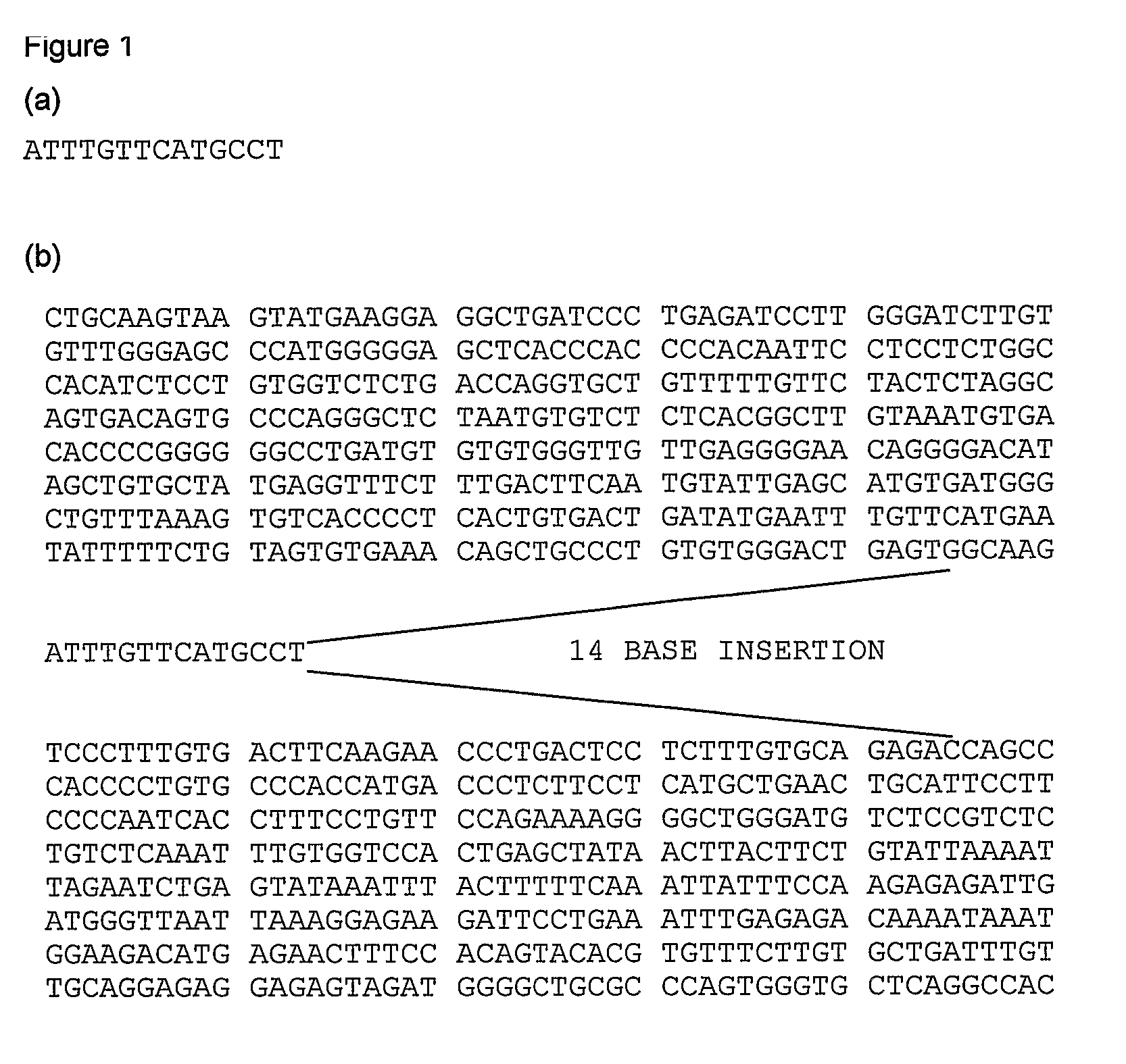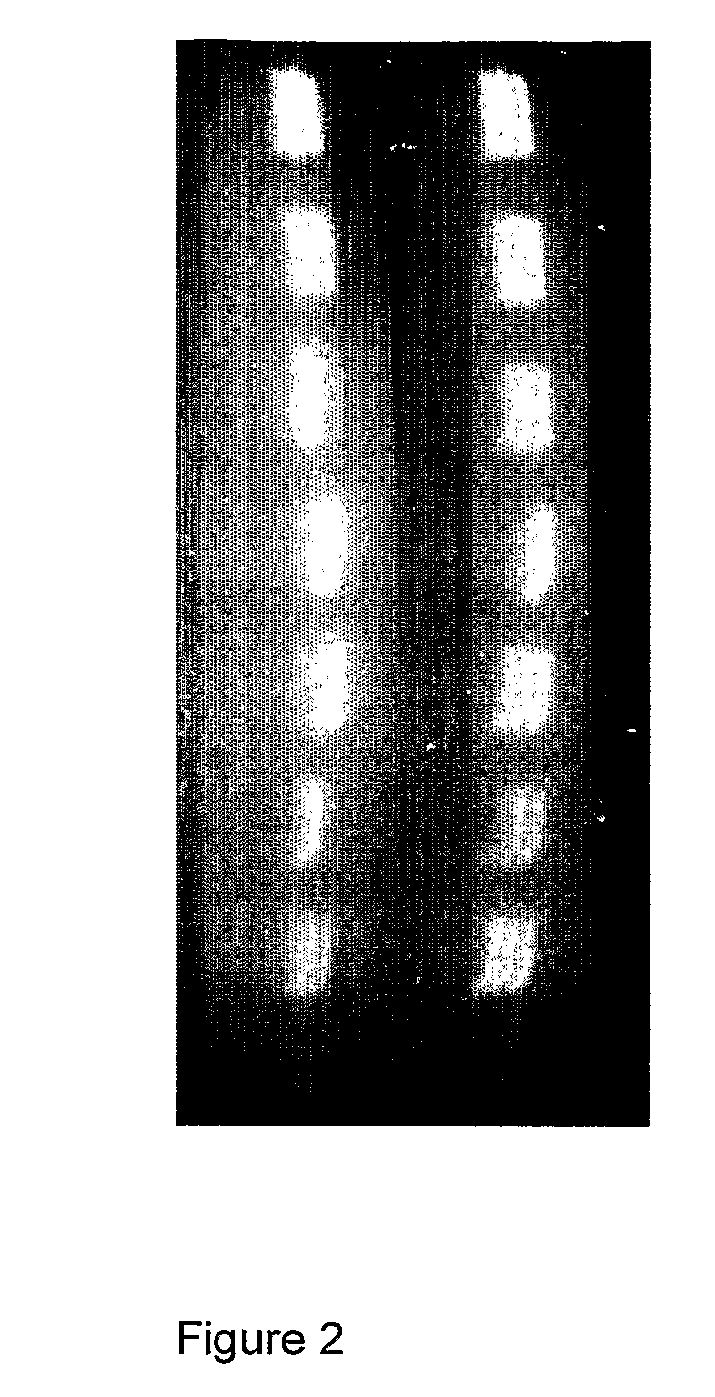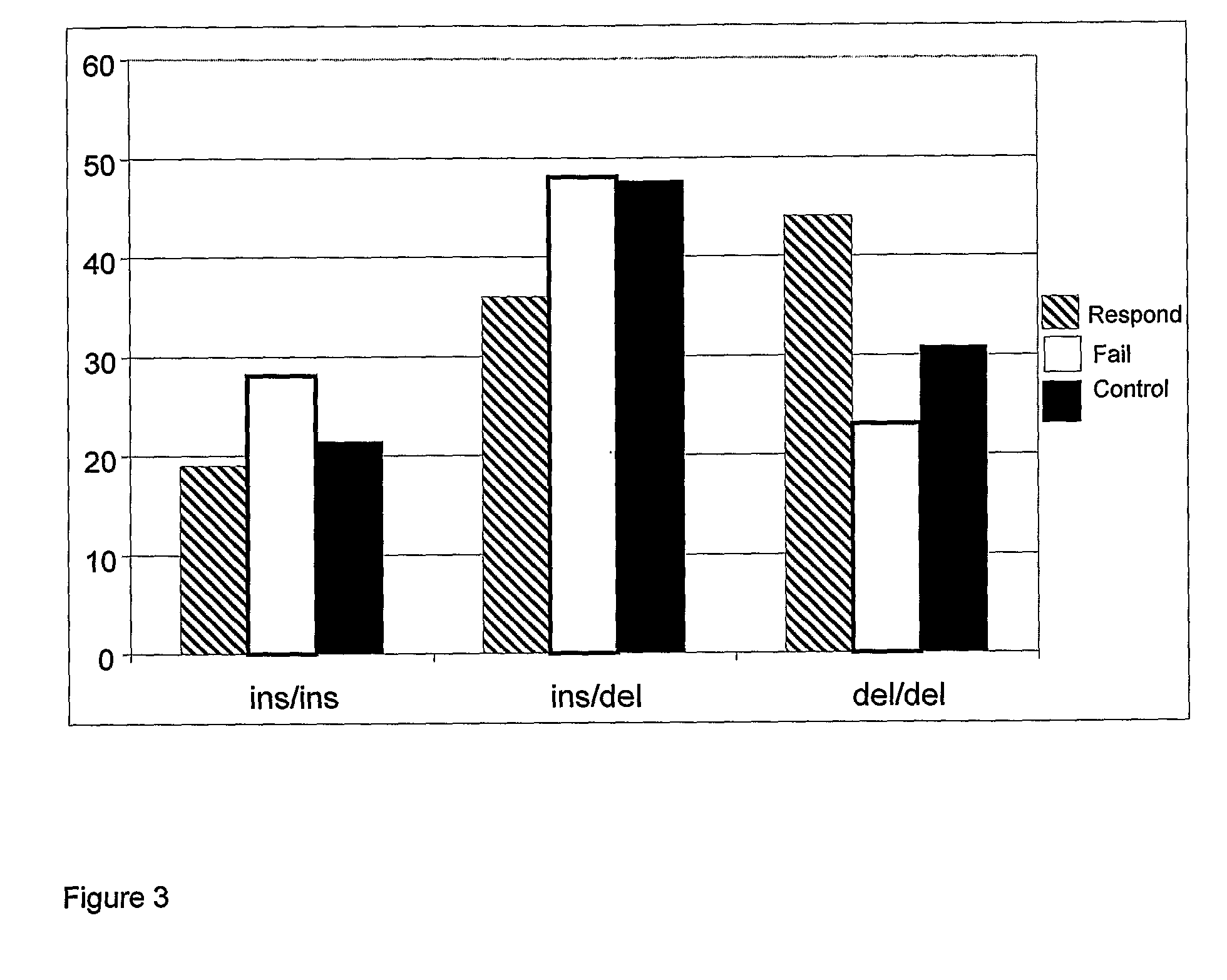Drug response markers
a technology of response markers and cytokine, applied in the field of drug response markers, can solve the problems of prolonged graft survival and inhibition of cellular immune responses, and achieve the effect of powerful predictor of the expected response of a patien
- Summary
- Abstract
- Description
- Claims
- Application Information
AI Technical Summary
Benefits of technology
Problems solved by technology
Method used
Image
Examples
example 2
HLA-G Marker
[0143]Details of the second marker, the presence or absence of a 14 bp insertion / deletion polymorphism in HLA-G are disclosed herein.
Aldehyde Oxidase (SNP AOX3404A>G) Marker
[0144]The third marker is the presence of the coding SNP AOX3404A>G in the gene for Aldehyde Oxidase 1. The presence of G in this position (by comparison to A) is indicative of reduced response of a subject or azathioprine. Details of this marker were presented at the 2008 Meeting of the British Society for Gastroenterology on Thursday 13 Mar. 2008, Birmingham, GB: “Common polymorphism in the aldehyde oxidase gene is a marker of non-response to azathioprine therapy in inflammatory bowel disease” (M A Smith, T Marinaki, A Ansari, J Sanderson). An abstract of the presentation was published in Gut. 2008; 57: A1-A172, the contents of which are hereby incorporated by reference.
Methods:
[0145]A cohort of 182 prospectively recruited patients starting 2 mg / kg AZA for IBD (Inflammatory Bowel Disease) was divide...
PUM
| Property | Measurement | Unit |
|---|---|---|
| Fraction | aaaaa | aaaaa |
| Current | aaaaa | aaaaa |
| Fraction | aaaaa | aaaaa |
Abstract
Description
Claims
Application Information
 Login to View More
Login to View More - R&D
- Intellectual Property
- Life Sciences
- Materials
- Tech Scout
- Unparalleled Data Quality
- Higher Quality Content
- 60% Fewer Hallucinations
Browse by: Latest US Patents, China's latest patents, Technical Efficacy Thesaurus, Application Domain, Technology Topic, Popular Technical Reports.
© 2025 PatSnap. All rights reserved.Legal|Privacy policy|Modern Slavery Act Transparency Statement|Sitemap|About US| Contact US: help@patsnap.com



